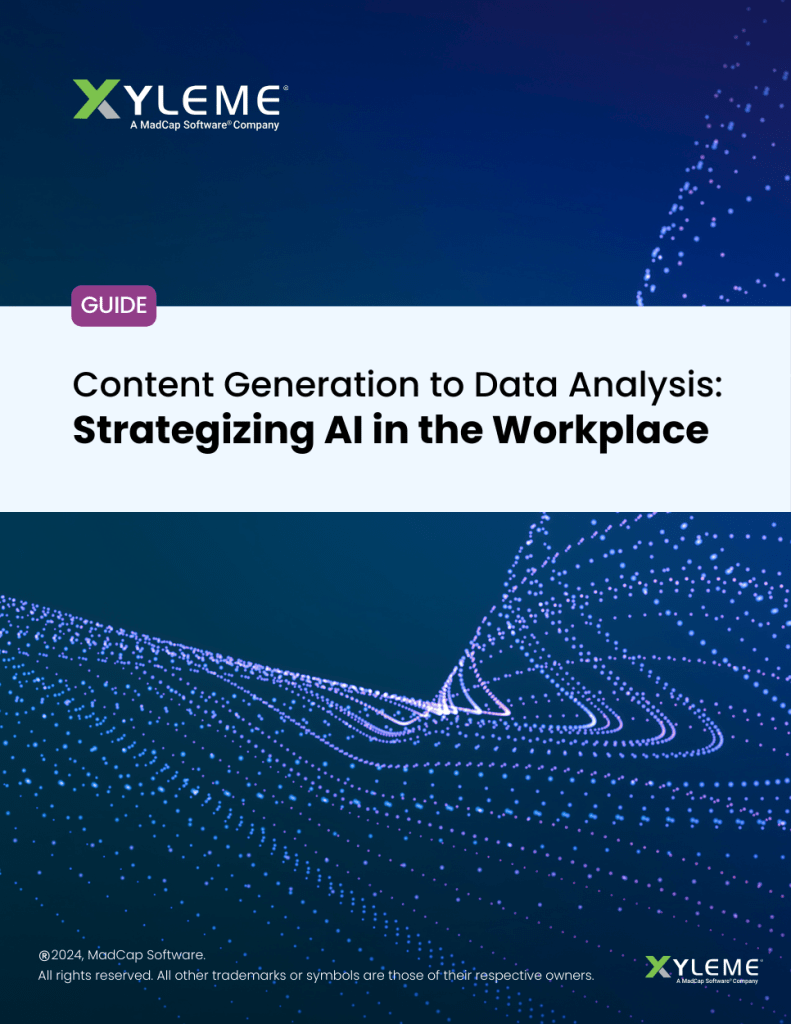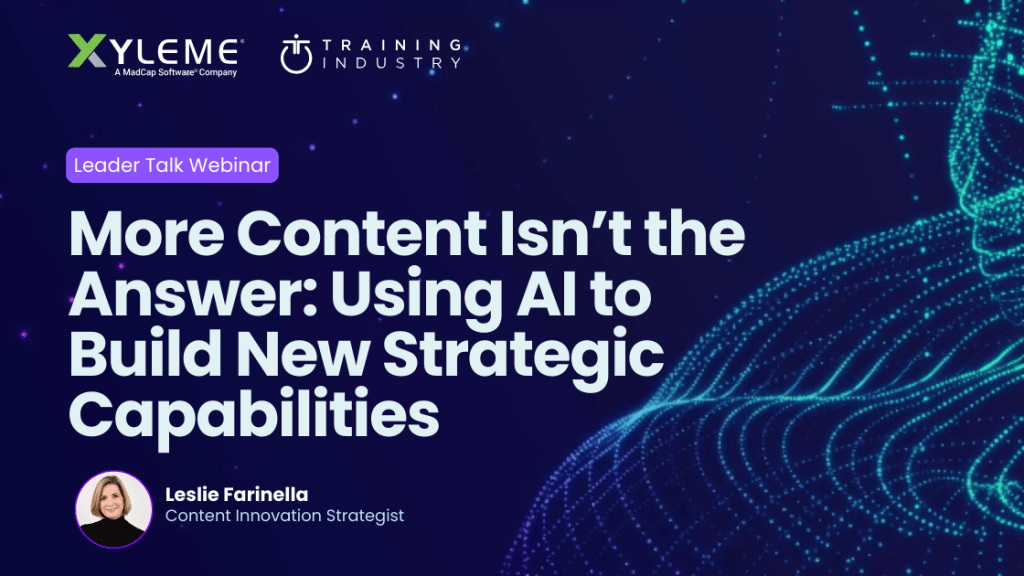In the evolving world of AI, there are jargon and concepts to wrap our heads around. It can feel overwhelming trying to make sense of it all. That’s why it’s so important for teams and organizations to grasp the basics—the fundamental AI terms we discuss in this blog. Once you’ve got a handle on these concepts, you’ll be well-equipped to stay ahead and in the loop in the AI game.
1. Artificial Intelligence (AI)
Artificial Intelligence (AI) today refers to advanced systems that use machine learning (ML), deep learning, and natural language processing to perform tasks that typically require human intelligence, such as understanding language, recognizing patterns, making decisions, and adapting to new information. Unlike the portrayals in science fiction, which often depict AI as sentient robots or superintelligent beings, modern AI systems are specialized tools that learn from large amounts of data and improve over time without explicit human programming. These systems are used in various applications like virtual assistants, recommendation systems, and autonomous vehicles, functioning through complex algorithms and data-driven models rather than possessing human-like consciousness or emotions.
2. Machine Learning (ML)
Machine Learning is a specialized field within AI that centers around the utilization of data and algorithms to empower AI systems to replicate the learning process inherent in human beings. Through the systematic analysis of data patterns and the application of algorithms, machine learning enables AI to acquire knowledge and skills, enhancing its performance over time through iterative learning. This iterative process allows AI systems to adapt, evolve, and refine their predictive capabilities, ultimately leading to enhanced accuracy and efficiency in decision-making and problem-solving tasks.
3. Deep Learning
Deep learning, a facet within the realm of AI, emulates the intricate workings of the human brain, absorbing and comprehending information to drive decision-making processes. Diverging from algorithms limited to singular tasks, this particular branch of machine learning possesses the remarkable ability to derive insights from unstructured data without requiring explicit instructions or guidance. Deep learning encompasses a dynamic approach to AI that mirrors the innate adaptability and learning capabilities of the human mind. Deep learning revolutionizes the way machines perceive and interpret information to make informed decisions autonomously.
4. Neural Network
A neural network, also known as algorithms, is a model used in machine learning that processes information similar to the human brain by mimicking the behavior of biological neurons. To operate with high accuracy, neural networks require training data which improves their performance over time. As a result, they are powerful tools in computer science, especially in AI, since they allow for fast classification and clustering of high volumes of data. Google’s search algorithm is one of the more popular examples of a neural network. Neural networks are occasionally referred to as simulated neural networks (SNNs) or artificial neural networks (ANNs), and they are an essential part of deep learning models.
5. Dataset
A dataset refers to an organized collection of data that is stored for analysis or processing. Such data is typically related and extracted from a single source or targeted for a specific project. For instance, a business dataset may comprise sales figures, customer contacts, and transactions. Datasets can contain different data types, including numeric values, texts, images, and audio recordings. The data within a dataset can be accessed individually, collectively, or in supervised form.
"By 2025, 30% of enterprises will have implemented an AI-augmented development and testing strategy, up from 5% in 2021." - Gartner
6. Large Language Models (LLMs)
Large language models (LLMs) are neural networks that have been trained on extensive textual, language-based datasets, equipping them with the capability to comprehend and generate natural language, enabling a wide range of applications. Various companies, including IBM, have dedicated years to implementing and refining LLMs to enhance their natural language understanding (NLU) and natural language processing (NLP) capabilities. The integration of LLMs into corporate frameworks has been a parallel progression, alongside advancements in machine learning techniques, models, algorithms, neural networks, and the transformer models that underpin these AI systems. As a result, LLMs have become accessible to the public through user-friendly interfaces like OpenAI’s Chat GPT-3 and GPT-4.
7. Generative AI
Generative AI, often referred to as gen AI, possesses the capability to generate original content in various forms such as text, images, videos, and more. This is facilitated by sophisticated deep learning models that emulate human brain functionality. These models analyze extensive datasets to identify patterns and relationships, enabling them to interpret user input and produce relevant and high-quality responses. Furthermore, generative AI has seen significant integration into online tools and chatbots, providing users with human-like responses to their queries and instructions. The widespread adoption of generative AI has surged in the last few years, largely driven by the introduction of OpenAI’s ChatGPT and DALL-E models. These groundbreaking models have democratized access to AI tools, making them readily available to consumers and contributing to the significant growth in the use of generative AI technology.
8. Prompt
An AI prompt is a concise and specific instruction or piece of information provided to an AI system in order to guide its generation of output or response. It serves as a starting point for the AI model, shaping its understanding of the desired context, topic, or objective. By tailoring the prompt, users can influence the AI’s output to align with their preferences or requirements. The quality and clarity of the prompt play a crucial role in the AI system’s ability to generate relevant, coherent, and accurate responses or outputs. Crafting an effective AI prompt involves striking a balance between providing sufficient guidance while allowing the AI model flexibility in its problem-solving capabilities.
9. Hallucination
AI hallucinations refer to incorrect or misleading outcomes produced by AI models. These errors can stem from various factors, such as inadequate training data, flawed assumptions within the model, or biases present in the training data. When AI hallucinations occur, they pose a significant challenge for AI systems involved in critical decision-making, such as medical diagnoses or financial trading. AI models derive their predictive abilities from training on data and identifying patterns within it. However, when the training data is incomplete or biased, the AI model can learn incorrect patterns, resulting in inaccurate predictions or hallucinations.
Explore the ways in which AI implementation can enhance talent management, continuous learning, and content delivery. Discover AI’s potential in identifying skills, improving retention and engagement, and streamlining talent intelligence.
Download the guide to unlock AI’s transformative potential in optimizing talent management and driving successful learning.
10. Natural Language Processing (NLP)
Natural Language Processing (NLP) can be very simply defined as the system used to take a natural-language input (whether text, or audio) and then turn that input into a conventional computer command. An example would be when you ask your smart speaker “What’s the weather today?”, the NLP system in your smart speaker is responsible for processing that verbal input and then telling the system behind NLP in the processing chain that the user wants the “Current Weather” functionality. Since there are many different ways that a user could ask for the current weather, NLP systems are solely focused distilling natural-language inputs down to what conventional command the user desires.
11. Natural Language Generation (NLG)
Natural Language Generation can be viewed as essentially being the “opposite” of Natural Language Processing, as it is responsible for taking conventional inputs and turning them into natural-language outputs. So, in our example for NLP we stated that it was NLP’s responsibility for taking the speech of “What’s the weather” and mapping it to the “Current Weather” functionality, while it would be NLG’s responsibility of taking the “Current Weather” functionalities response (which would probably be a table of temperatures, rain chance, humidity, etc.) and turning that into a natural language response such as “The current temperature is 76 degrees with a light wind, so you shouldn’t need a coat” that your smart speaker would respond with.
12. Prompt Engineering
Prompt engineering involves directing generative artificial intelligence (generative AI) to produce desired outputs by providing detailed instructions. It entails selecting the most suitable formats, phrases, words, and symbols to guide the AI in meaningful user interactions. Prompt engineers utilize creativity and trial and error to curate a set of input texts that enable the application’s generative AI to function as intended. The prompt serves as a natural language request for the generative AI to execute a specific task.
Our leader talk webinar with Training Industry, More Content Isn’t the Answer, explores how organizations can leverage AI and machine learning (ML) to drive organizational agility and productivity. Rather than simply creating more content, AI can enable organizations to adapt and learn in real-time by sensing, predicting, and reacting to changing information.
> Watch Now
13. LLM Fine Tuning
Model fine tuning involves enhancing a pre-trained model that has acquired fundamental patterns and features from an extensive dataset by further training it on a smaller, domain-specific dataset. LLM fine-tuning specifically refers to enhancing LLMs such as OpenAI’s GPT series. This approach is vital because developing a large language model from scratch is resource-intensive and time-consuming. Capitalizing on the pre-existing model’s acquired knowledge helps to attain superior performance on specific tasks with less data and computing resources. Fine-tuning is an essential machine learning technique for adapting pre-existing models to specific domains or tasks.
14. Retrieval-Augmented Generation (RAG)
RAG is a technique that boosts the precision and dependability of generative AI models by integrating factual information obtained from external sources while generating responses. It empowers large language models (LLMs) to tap into and include domain-specific data customized for an organization, resulting in more pertinent and precise responses aligned with the organization’s requirements. RAG improves LLMs by giving them the ability to dynamically adapt to new data, offering greater flexibility and adaptability. In a nutshell, RAG enhances AI models by combining retrieved facts with generation capabilities, resulting in more accurate and tailored responses.
15. Chatbot
A chatbot is a computer program that mimics human conversation with an end user. Conversational AI techniques, such as natural language processing (NLP) and natural language generation (NLG), are increasingly used in modern chatbots to understand user questions and automate responses to them. Advanced chatbots that incorporate generative AI capabilities, enable them to handle complex queries and adapt to a user’s conversational style. These chatbots with generative AI can understand common language patterns, use empathy when answering questions, and offer enhanced functionality for managing content chaos in some of the largest enterprise organizations.







